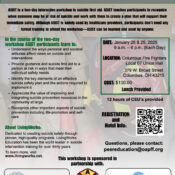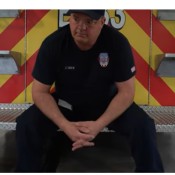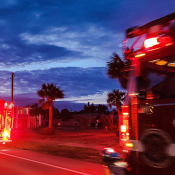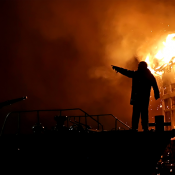Problematic Drinking
- Home
- Problematic Drinking
Problematic Drinking
Firefighters and alcohol, what the data says
Research on firefighters’ relationship to alcohol and how that compares to the general public reveals some interesting and useful findings
Apr 7, 2015
When it comes to alcohol consumption, how much is too much? And, do firefighters drink too much?
Science defines binge drinking as five or more servings for men or four or more servings for women. The definition is based on blood alcohol content (BAC) — that consuming that many drinks within two hours typically raises BAC to 0.08 g/DL or higher.
One drink is defined as a 12 ounces of 5 percent alcohol beer, 8 ounces of malt liquor with 7 percent alcohol, 5 ounces of wine with 12 percent alcohol, or 1.5 ounces of 80 proof spirits or liquor, which is 40 percent alcohol.
In a study funded by the American Heart Association, among firefighters across the country in more than 30 departments, we asked about alcohol use and binge drinking in the fire service. When we gave the scientific definition of a binge, it was usually met with laughter.
Perceived differences
One of the first questions we asked was what the personnel thought about the rates of alcohol use among firefighters, and the question met with a mix of answers.
Some believed that the amount firefighters drink is similar to the general population and other groups of workers. Others believed that alcohol use was high among firefighters and that drinking was supported by the social norms in most departments.
Given totally opposite opinions on the matter, it is difficult to know whether alcohol is an issue that needs to be addressed. This is where the data is important.
In a separate study, funded by a grant from FEMA’s Research and Development, we asked firefighters about their alcohol use. Data was collected from 656 male firefighters from 24 departments in the Missouri Valley region.
The departments were randomly selected and 97 percent of the personnel asked agreed to participate in the study, which means the results are likely accurate for the region surveyed. Female firefighters were not included in data analysis because of the extremely low rate of female firefighters in the sample and the inability to draw meaningful statistics from such a small number.
The results
Of the firefighters surveyed, 85 percent of career and 71 percent of volunteer firefighters reported drinking alcohol in the past 30 days. Approximately half of career and volunteer firefighters reported binge drinking in the past month.
We found that, on average, career firefighters reported drinking 10 days per month, which is about half their off-duty days in most departments. Volunteer firefighters reported drinking an average of 12 days a month.
Of note, chiefs had a lower prevalence of binge drinking than firefighters.
How does that compare to the general male population in the United States?
According to the 2013 National Survey on Drug Use and Health, 62 percent of males reported consuming alcohol in the past month — significantly lower than the fire service.
In 2010, the Centers for Disease Control and Prevention published data on binge drinking from more than 176,000 males. They found that 23 percent of males reported binge drinking in the month previous — half the rate of binge drinking in the fire service.
We also looked at the relationships between drinking and other health outcomes. Overall, the best health and safety outcomes were for those who drank some alcohol but did not binge drinking. The results are similar to those in the general population, which has found there is some protective effect of moderate alcohol use.
Addressing ‘why’
So, if the data shows rates of binge drinking double the general population, why were the perceptions so varied?
It could be that the social norms among firefighters lead them to believe their drinking is normal — if all your friends and co-workers are drinking in a way similar to you, you are more likely to believe your drinking is normal.
As for the reasons for the high rates of alcohol use, the analysis of the AHA data provides some insight. One of the common suggestions was that firefighters may use alcohol to cope with the stress of the job and their experiences repeatedly being exposed to trauma.
Others highlighted how firefighters use drinking to encourage social bonding and camaraderie. Some felt the shift schedule and being off duty on so many days when others aren’t might contribute to drinking.
Whatever the reasons, alcohol use among firefighters deserves some attention. While binge drinking can lead to some memorable evenings and some fun stories, excessive drinking also can lead to increased risk of some cancers, cardiovascular disease and liver disease.
The amount of calories consumed in alcohol also needs to be considered. A binge-drinking episode can have as many calories as a meal, which can contribute to excess weight gain.
Managing the health effects needs to start with awareness of the negative impact of binge drinking for firefighters.
About the author
Sara A. Jahnke, Ph.D. is the director of the Center for Fire, Rescue and EMS Health Research at the National Development and Research Institutes. She was the principal investigator on two large-scale, DHS-funded studies of the health and readiness of the U.S. fire service and on a study on the health of women firefighters. She is a co-investigator of several studies focused on fitness, nutrition and health behaviors in firefighters. She completed her doctorate in psychology with a health emphasis at the University of Missouri – Kansas City and the American Heart Associations’ Fellowship on the Epidemiology and Prevention of Cardiovascular Disease. You can reach her at Sara.Jahnke@firerescue1.com
Courtesy of: https://www.firerescue1.com







